Insurer benefited from competitors’ renewal premium hikes as customers shop around
Motor insurers Esure and LV= have both posted improving results as rates rise and the industry starts to get to grips with the bodily injury claims problem. But claims inflation continues to take its toll on motor insurers’ numbers. There are also signs that rate increases are reducing (see ‘Pass notes’).
LV= saw its combined ratio drop 3.8 percentage points to a profitable 98.1% in the first half of 2011, from 101.9% in the same period last year. The insurer’s profit before tax jumped 53% to £52m from £34m, on the back of a 29% increase in gross written premium to £704m from £547m.
LV= general insurance managing director John O’Roarke said the improved combined ratio had been driven in part by personal lines motor price increases, which ranged from 10% on direct renewal business to between 20% and 30% for new business.
In addition, the higher premium volumes helped reduce the expense ratio, as the cost base was a lower percentage of the premium income.
Motor business accounted for 75% of LV=’s first-half in-force policies. The company says it is the UK’s fourth-largest car insurer.
O’Roarke said that rising bodily injury claims prevented a better result. “The combined ratio should have improved by a lot more than 3.8 points, but the thing that kept it from improving further is personal injury claims inflation and frequency, which continues to be an issue for us as well as the rest of the industry.”
O’Roarke estimates that 50% of LV=’s motor premium goes to paying personal injury claims. Of the amount that is paid out for these claims, over one-third (35%) is spent on so-called ‘frictional costs’, such as legal fees and accident management company costs.
LV=’s premium income grew both because of rate rises and an increase in in-force policies. O’Roarke says the company has been able to win business because rate rises are prompting more people to shop around.
“There has been a huge uptick in the number of people going onto comparison sites. We are quite well placed to benefit from that,” he said.
He said that LV=’s new business prices are cheaper than some competitors’ renewal premiums because their strategy has been to boost renewal, rather than new business premiums, to sustain profitability.
But, while admitting that LV= prices business more cheaply than rivals to win business, O’Roarke insisted that this is not to the detriment of underwriting profitability. He argued that the company only prices more cheaply for good business, and that the company manages claims efficiently. “If you are illogically cheap, you don’t write business at 98% combined ratios,” he said.
Fellow motor insurer Esure Group Holdings increased earnings before interest, taxes, depreciation and amortisation to £18.6m, from £1.1m in 2009.
A big factor in the improvement was Esure’s 49% stake in price comparison site Gocompare, which is accounted for as a joint venture in its books. Esure’s share in the price comparison site’s profits was £10.2m.
“I am delighted with Esure’s positive progress since our management buy-out in February 2010. We posted a substantial increase in group profits during 2010 to £18.6m for the full calendar year – or £32.5m for the period following the MBO,” Esure chairman Peter Wood told Insurance Times. “This was despite the continuing adverse effects of the personal injury phenomenon across the industry and some horrendous weather.”
Esure Insurance, the group’s main operating unit, made a loss of £7.5m in 2010 (2009: loss of £14.2m).
The latest AA motor insurance index shows that while premiums have risen 30.1% over the past year, the increase has tailed off in the last three months (see graph).
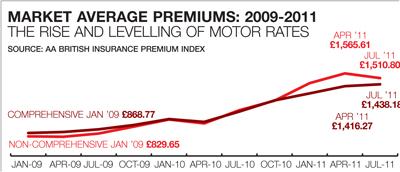
Pass notes: Motor
What concerns do insurers have over private motor rates?
The AA premium index figures will concern some insurers, as non-comprehensive premiums declined 3.5% over the last three months. There are fears that the tailing off of rate rises will hurt insurers, especially as bodily injury claims inflation is running at anywhere between 8% and 16% per annum.
What about commercial lines?
Commercial is also in trouble. Last year’s underlying net combined ratio was more than a percentage point worse than private motor insurance, at 117.1%. The results were propped up by reserve releases, but the pot is running dry in commercial, and there could be reserve strengthening taking place over the next couple of years.
Are insurers changing their business models?
More and more insurers are copying model used by Admiral – that is, selling stripped-down products on aggregator sites at a competitive rate and earning extra on ancillary income. Insurers on price comparison websites have an average expense base in the region of 20%, but analysts believe that ideally they should be aiming for the mid- to low-teens.





























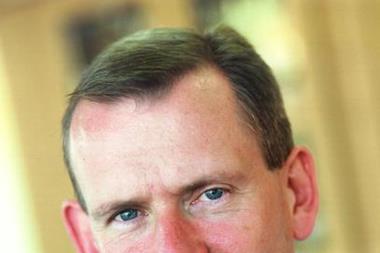

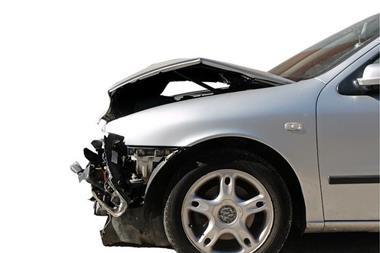
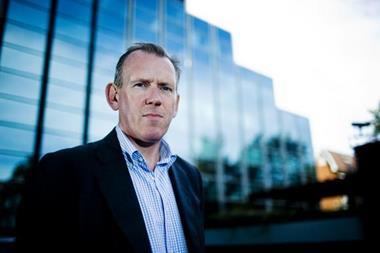

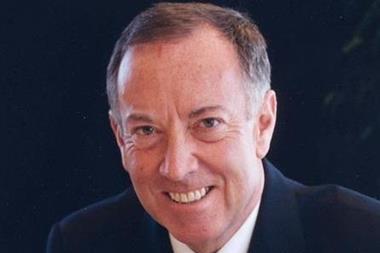



No comments yet